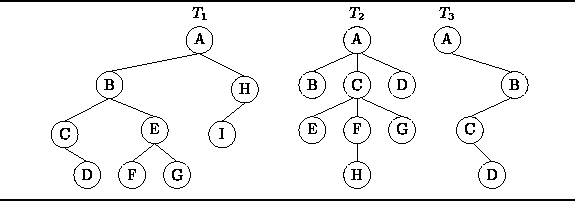- preorder traversal,
- inorder traversal (if defined),
- postorder traversal, and
- breadth-first traversal.
![]()
![]()
![]()
rather than
![]()

If ![]() ,
the trees are said to be isomorphic .
Devise an algorithm to test whether two binary trees are isomorphic.
What is the running time of your algorithm?
,
the trees are said to be isomorphic .
Devise an algorithm to test whether two binary trees are isomorphic.
What is the running time of your algorithm?
